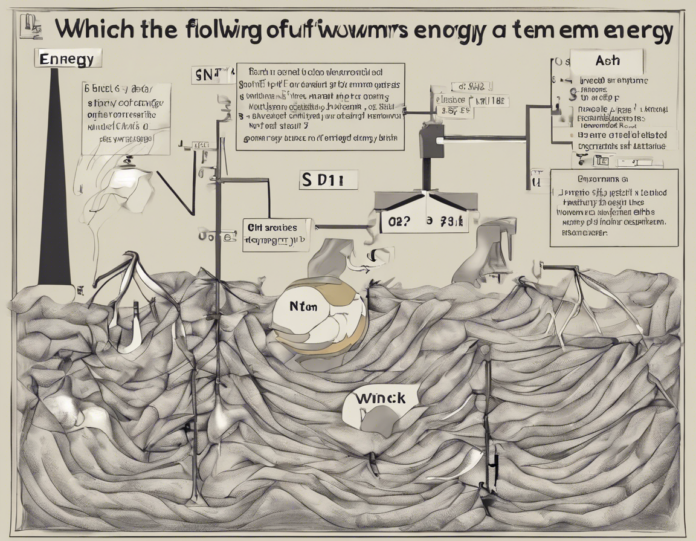When it comes to understanding energy and its various forms, it is crucial to have a grasp of the different units used to measure it. Energy is a fundamental concept in physics that plays a vital role in almost every aspect of our lives, from powering our homes to fueling our vehicles. In this article, we will explore the different units of energy measurements, ranging from the basic units to more specialized and industry-specific ones. By the end of this comprehensive guide, you will have a solid understanding of how energy is quantified and expressed in various systems of measurement.
The Basics of Energy Measurement
Energy can be measured using several different units, with the most common ones being the joule (J) and the calorie (cal). The joule is the primary unit of energy in the International System of Units (SI) and is defined as the amount of energy transferred when a force of one newton acts over a distance of one meter. The calorie, on the other hand, is a unit of energy commonly used in chemistry and nutrition, and is defined as the amount of energy required to raise the temperature of one gram of water by one degree Celsius.
Converting Between Units
Converting between different units of energy can be a bit tricky, as there are multiple conversion factors to consider. Here are some common conversion factors to keep in mind:
- 1 calorie (cal) = 4.184 joules (J)
- 1 kilowatt-hour (kWh) = 3.6 megajoules (MJ)
- 1 British thermal unit (BTU) = 1055 joules (J)
- 1 kilocalorie (kcal) = 4184 joules (J)
By understanding these conversion factors, you can easily switch between different units of energy measurement and make more accurate calculations.
Specialized Units in Physics and Engineering
In the field of physics and engineering, there are several specialized units of energy measurement that are commonly used. Some of these units include:
Electronvolt (eV)
The electronvolt is a unit of energy used in atomic and nuclear physics, as well as particle physics. It is defined as the amount of kinetic energy gained by an electron when accelerated through an electric potential difference of one volt. One electronvolt is equivalent to 1.602 x 10^-19 joules.
Erg
The erg is a unit of energy used in the CGS (centimeter-gram-second) system of units. It is defined as the amount of work done by a force of one dyne acting over a distance of one centimeter. One erg is equivalent to 1 x 10^-7 joules.
Energy Units in Chemistry and Thermodynamics
Chemistry and thermodynamics also have their own set of units for measuring energy. Some of the common units used in these fields include:
Enthalpy (H)
Enthalpy is a measure of the total energy of a thermodynamic system. It includes the internal energy of the system plus the product of pressure and volume. Enthalpy is typically measured in units of energy, such as joules or calories.
Calorimetry in Chemistry
In chemistry, the amount of energy released or absorbed in a chemical reaction is often measured using a calorimeter. The heat exchange is typically measured in joules or calories.
Practical Applications of Energy Measurement Units
Understanding energy measurement units is crucial in various real-world applications. For example:
- In the automotive industry, fuel efficiency is often measured in miles per gallon (MPG) or liters per 100 kilometers, which are indirectly related to energy units.
- In the renewable energy sector, the output of solar panels or wind turbines is often measured in kilowatt-hours (kWh) to determine their efficiency and productivity.
- In the food industry, the energy content of food products is measured in kilocalories (kcal) to provide consumers with information about their nutritional value.
Frequently Asked Questions (FAQs)
1. What is the relationship between power and energy?
Answer: Power is the rate at which energy is transferred or converted. It is measured in watts (W) and is equal to energy (joules) divided by time (seconds).
2. How is energy measured in the United States?
Answer: In the United States, energy is commonly measured in British thermal units (BTUs) or kilowatt-hours (kWh) for electricity.
3. Can energy units be converted between different systems of measurement?
Answer: Yes, energy units can be converted between different systems, such as the SI system and the CGS system, using appropriate conversion factors.
4. What is the significance of energy measurement in the context of climate change?
Answer: Measuring and monitoring energy consumption is crucial for addressing climate change, as it allows us to track our carbon footprint and implement strategies for reducing energy usage and emissions.
5. How are energy measurement units used in the context of sustainable development?
Answer: Energy measurement units play a key role in assessing the sustainability of energy sources and systems, as they help quantify the efficiency and environmental impact of different energy technologies.
In conclusion, understanding the different units of energy measurement is essential for a wide range of scientific, industrial, and practical applications. Whether you are a student studying physics, an engineer designing a new technology, or a consumer looking to make informed choices about energy consumption, having a solid grasp of energy units will empower you to make more informed decisions and contribute to a more sustainable future.

